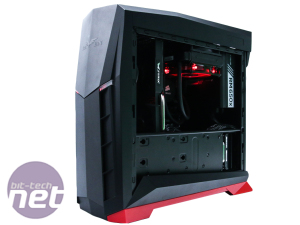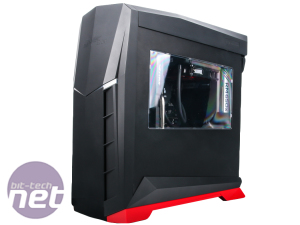
Performance Analysis
In games, it was pretty much as expected with the GSX - its R9 380 4GB graphics card breezed through at 1,920 x 1,080, and just about managed to scrape through at 2,560 x 1,440, mostly matching the results we saw from the GTX 960-touting PC Specialist Apollo 703, and performing somewhat better in Crysis 3 at the higher resolution thanks to the bigger frame buffer and higher memory bandwidth. It's important to remember though that we're using newer drivers and a more up-to-date version of Windows 10 so these things can come into play in all our benchmarks - the results are a rough guide only as comparing PCs reviewed 6 months or more apart is a tad tricky when we no longer have the older systems.Dino PC's tweaking and overclocking plus the use of fairly fast DDR4 memory saw it perform very well indeed in the rest of the benchmarks, actually coming top in the PCMark 8 Photo Editing test by a noticeable margin. Only in Cinebench R15 did it find its way near the middle of the graph, with hyper-threaded CPUs plus those with additional cores as well performing better.
Click to enlarge
The overclocking did result in the system drawing 12W more power under load than the similar PC Specialist Apollo 703 and nearly as much as the PC Specialist Vitrum, which was much more potent with a GTX 970 under the hood, but the differences were slight here. The storage results showed the prowess of the SM951 SSD - again these numbers are nice and can speed things up noticeably in some situations but for most scenarios, especially gaming, a standard SATA 6Gbps SSD would suffice.
A CPU and GPU delta T under full load using Prime 95 and Unigine Valley of 68°C and 69°C respectively (an ambient temperature of 14°C saw actual core temperatures of 82°C and 83°C as a result) show that the system is able to deal well with its tweaking and even on warm summer days there should be some headroom.
Conclusion
The Dino PC Primal GSX is a solid system and as per usual, buying the parts yourself will actually cost you £40-50 more and then you have to factor in the build time and overclocking, cable tidying plus the fact you get a warranty thrown in too. It's hard to argue on value at least and for the most part, Dino PC has offered a solid specification in our review system too. The case might not be to everyone's taste, but it's important to state that this and every other component is tweakable in the company's excellent online configurator, although it can still be held to account for the system it sent us - we don't let people off that easily.The only things that we have concerns about are the choice of case and, more importantly, the SSD - the rest of the hardware is pretty much what we'd pick for the same price. It's nice to showcase a speedy SSD in your system and to some extent it does make it stand out from the crowd. However, the lack of space due to the price premium, which is something we have to take into account in a review system, would be very restricting in the long run - 128GB on your OS drive just isn't enough if you're a keen gamer, especially in a system costing nearly £1,000. As such, we can highly recommend the GSX on the proviso that you opt for standard SATA 6Gbps 256GB SSD and not the SM951. A more balanced storage arrangement with a larger, more sensible SSD would have netted it a higher award too.
Dino PC Primal GSX


MSI MPG Velox 100R Chassis Review
October 14 2021 | 15:04










Want to comment? Please log in.